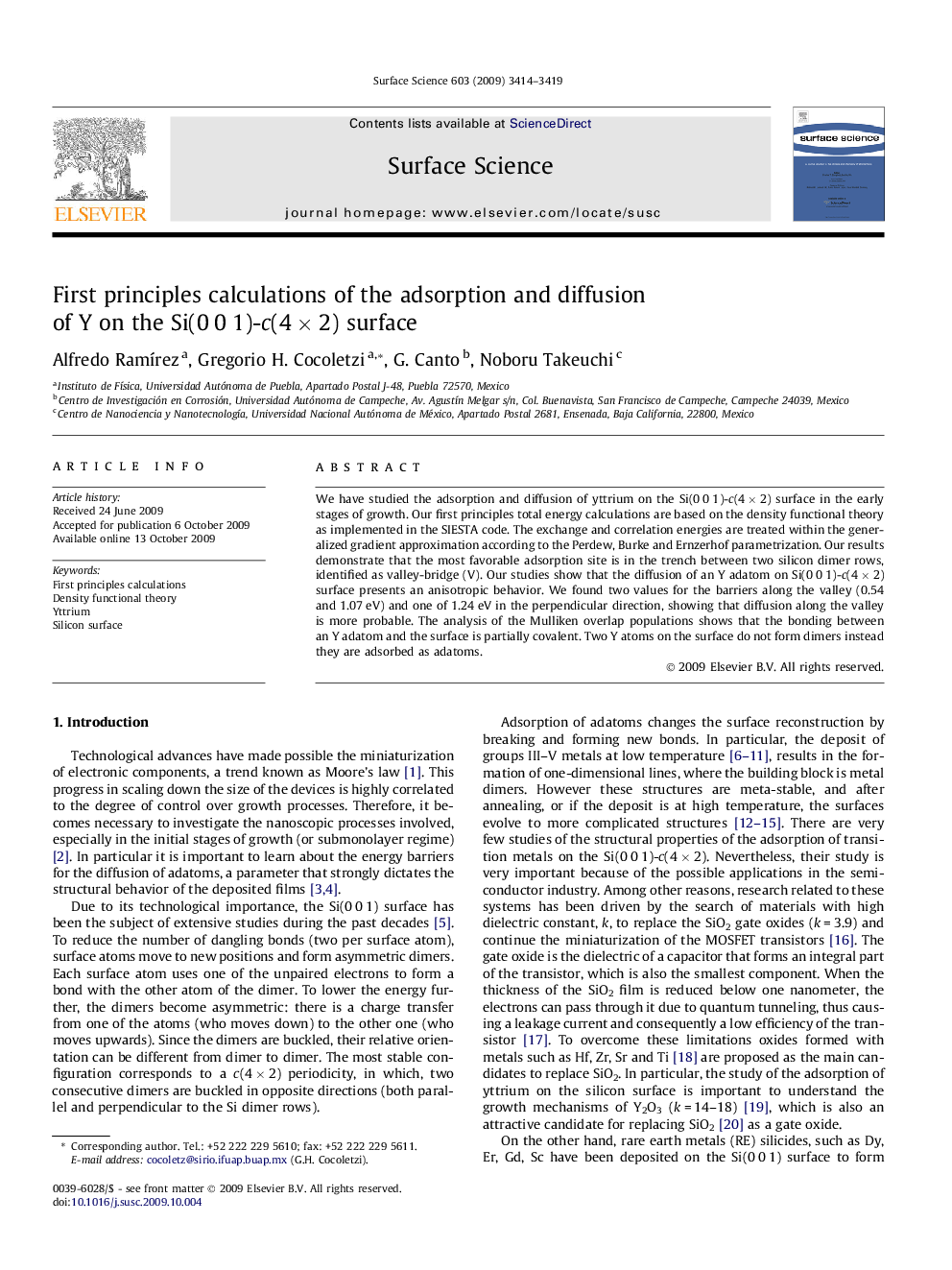| Article ID | Journal | Published Year | Pages | File Type |
|---|---|---|---|---|
| 5423463 | Surface Science | 2009 | 6 Pages |
Abstract
We have studied the adsorption and diffusion of yttrium on the Si(0Â 0Â 1)-c(4Â ÃÂ 2) surface in the early stages of growth. Our first principles total energy calculations are based on the density functional theory as implemented in the SIESTA code. The exchange and correlation energies are treated within the generalized gradient approximation according to the Perdew, Burke and Ernzerhof parametrization. Our results demonstrate that the most favorable adsorption site is in the trench between two silicon dimer rows, identified as valley-bridge (V). Our studies show that the diffusion of an Y adatom on Si(0Â 0Â 1)-c(4Â ÃÂ 2) surface presents an anisotropic behavior. We found two values for the barriers along the valley (0.54 and 1.07Â eV) and one of 1.24Â eV in the perpendicular direction, showing that diffusion along the valley is more probable. The analysis of the Mulliken overlap populations shows that the bonding between an Y adatom and the surface is partially covalent. Two Y atoms on the surface do not form dimers instead they are adsorbed as adatoms.
Related Topics
Physical Sciences and Engineering
Chemistry
Physical and Theoretical Chemistry
Authors
Alfredo RamÃrez, Gregorio H. Cocoletzi, G. Canto, Noboru Takeuchi,
